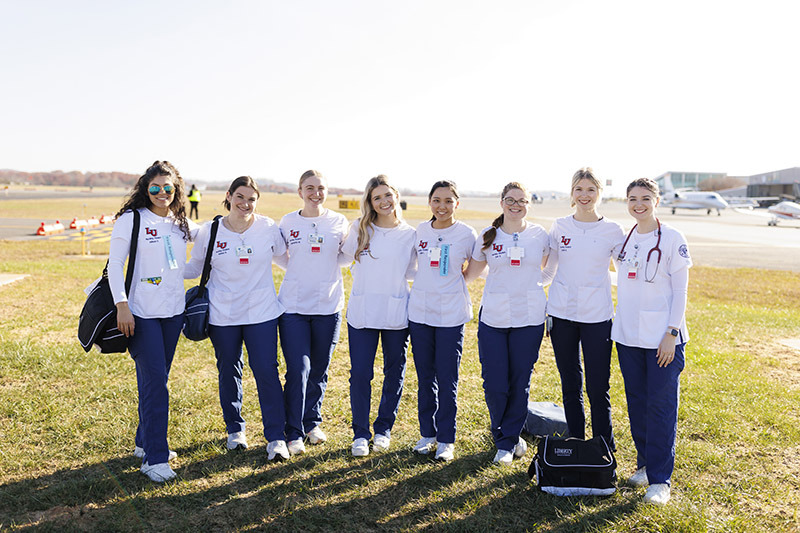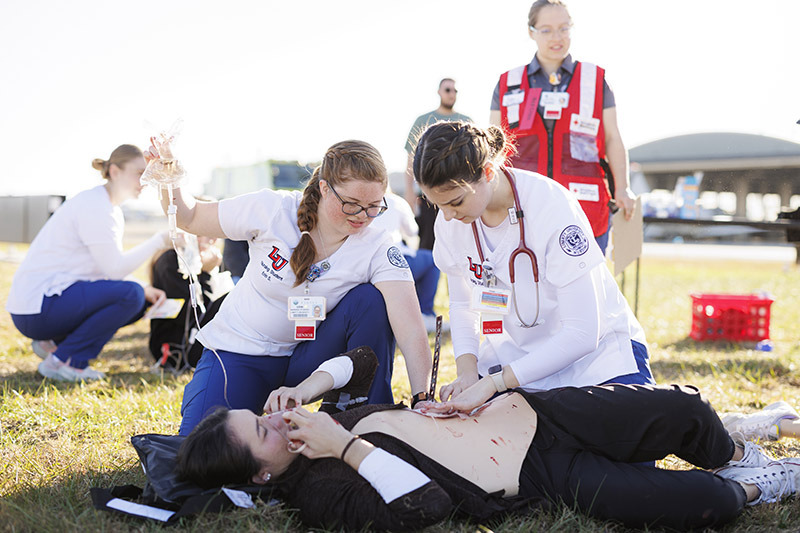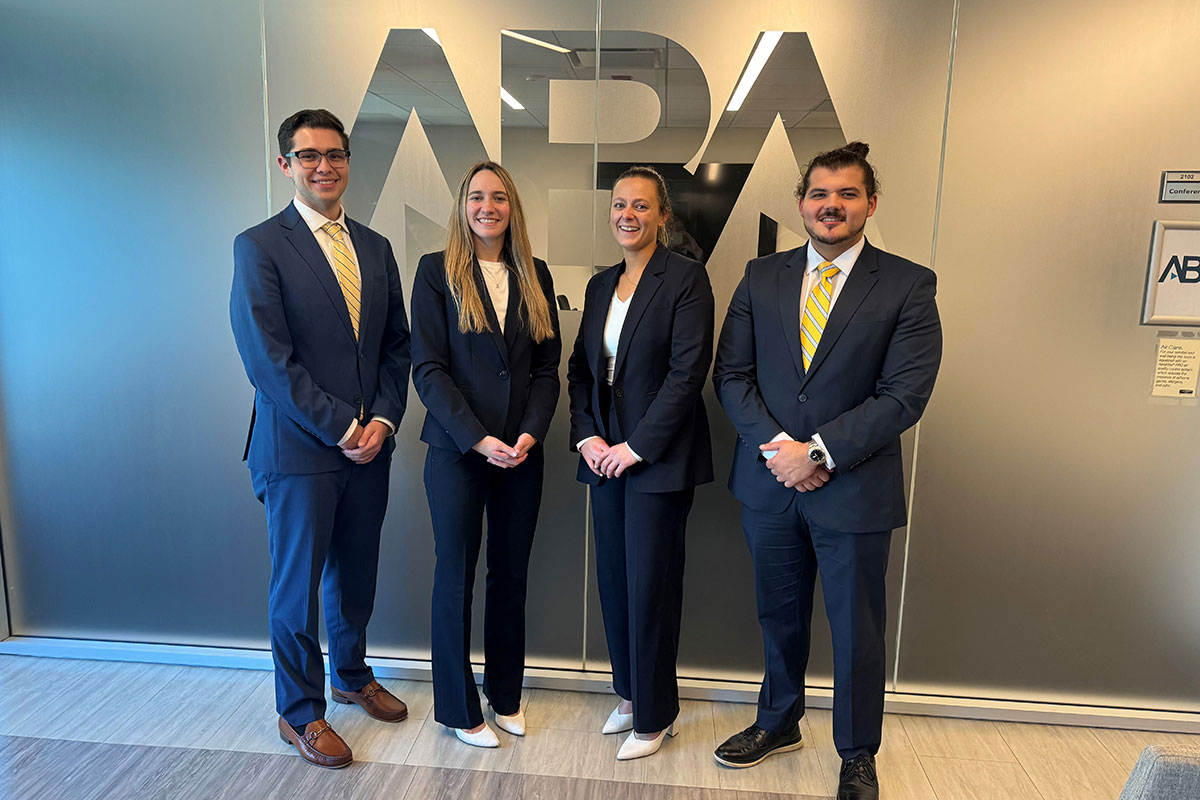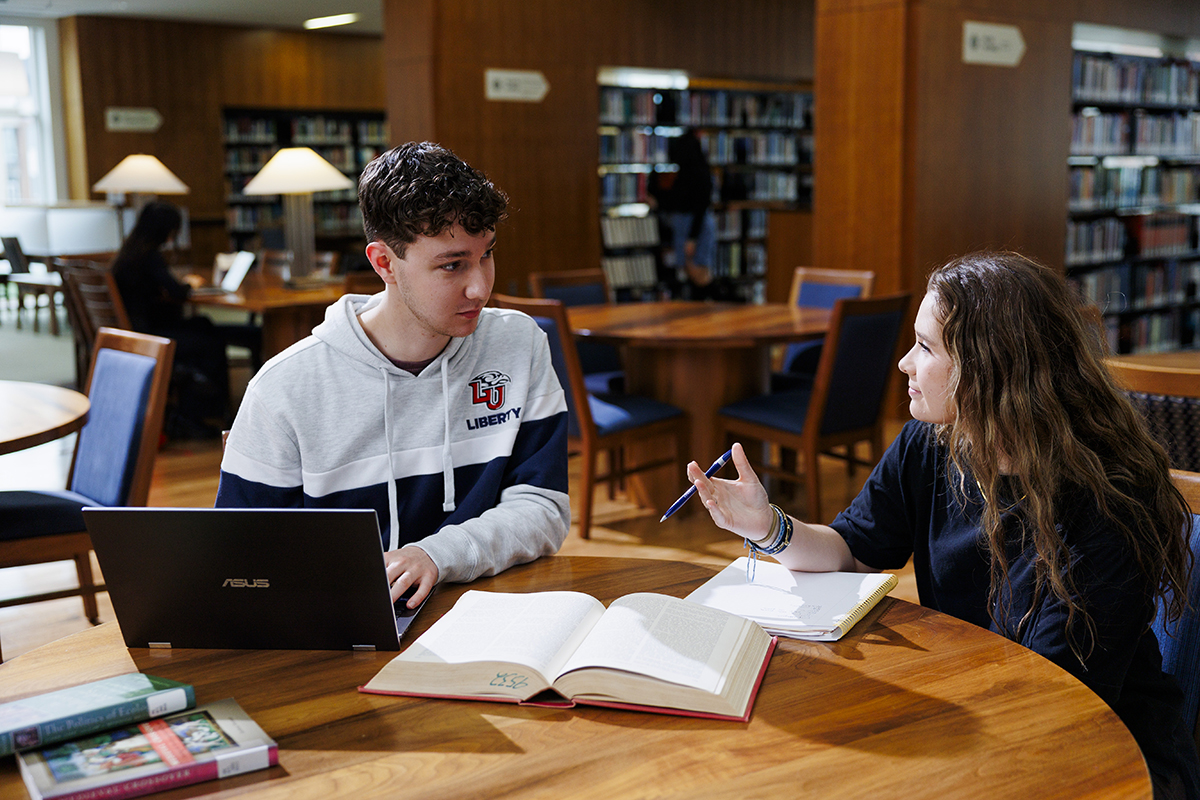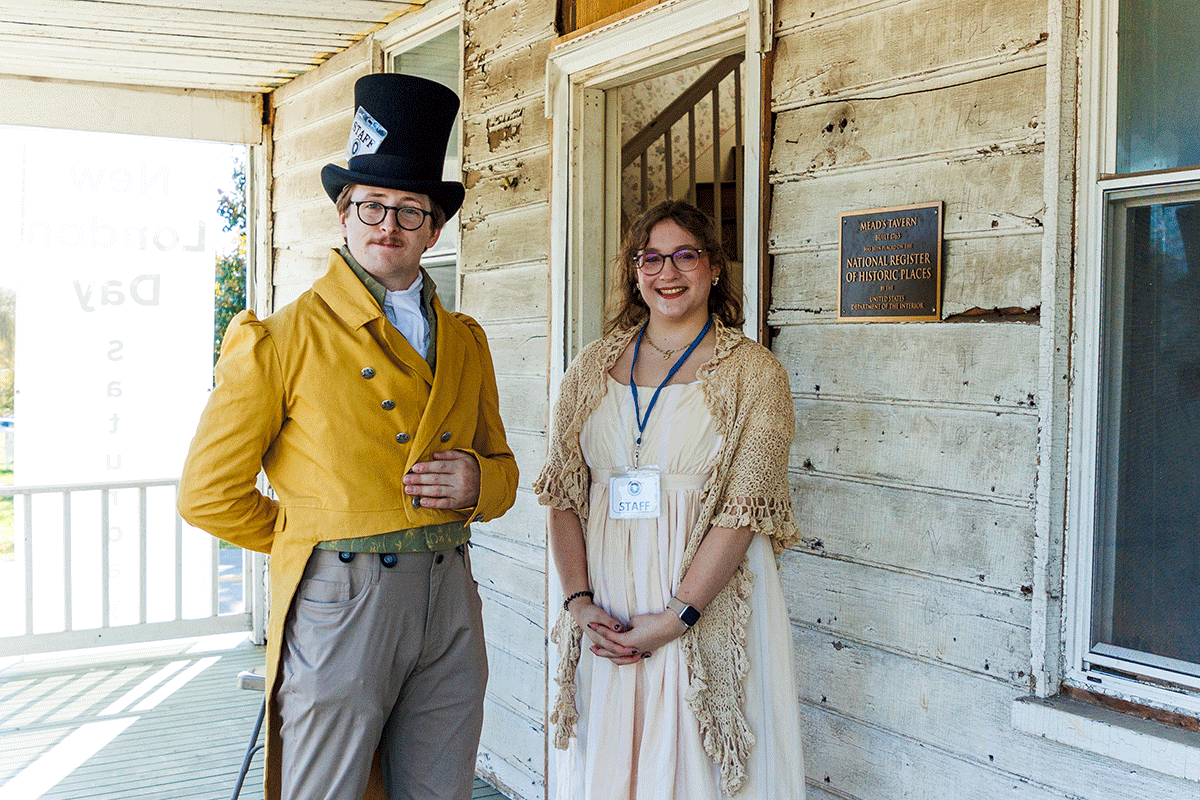Search News Archives
Filter News Articles
Additional Navigation
Simulated plane crash provides aeronautics, nursing students practice as first responders
November 17, 2023 : By Ted Allen - Office of Communications & Public Engagement
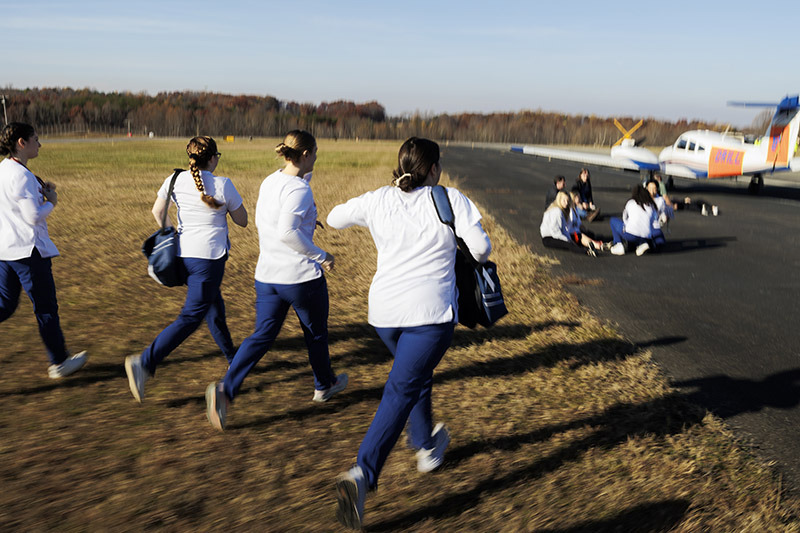
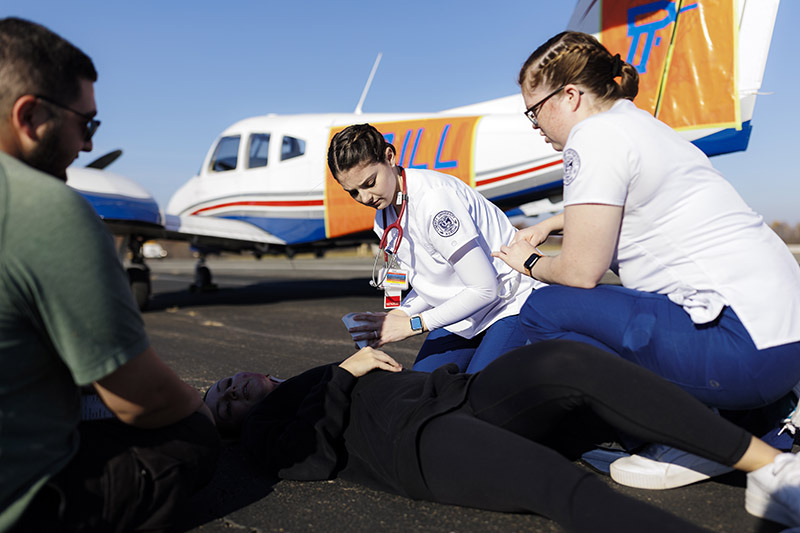
Emergency response management requires coordinated precision from a variety of trained professionals and volunteers, as students from Liberty University’s School of Aeronautics (LUSOA) and School of Nursing (LUSON) witnessed firsthand Thursday during a simulated air show crash into a crowd of spectators along runway 17 at Lynchburg Regional Airport.
It was the first time since 2019 that the hands-on simulation took place, due to the COVID-19 pandemic. In 2017, LUSOA Professor Dr. Mitch Morrison and LUSON Professor Dr. Dana Woody, who teaches a community health nursing class, devised the training activity that benefitted students from the two schools simultaneously. They planned it in coordination with Andrew Walton, director of safety for the School of Aeronautics and its fixed-base operator, Freedom Aviation.
Walton, who teaches a safety management class, said the drill was an effective way to train his students how to respond in a real-life emergency scenario.
“Part of (Safety Management Systems) is the requirement to have an emergency response plan in place,” he said. “We can talk about it in the classroom, but actually getting out and interacting with the fire chief, with airport police, with nursing students, and the way that they have been trained to respond to a medical event, it just adds a level of realism and hands-on training that the students really enjoy.”
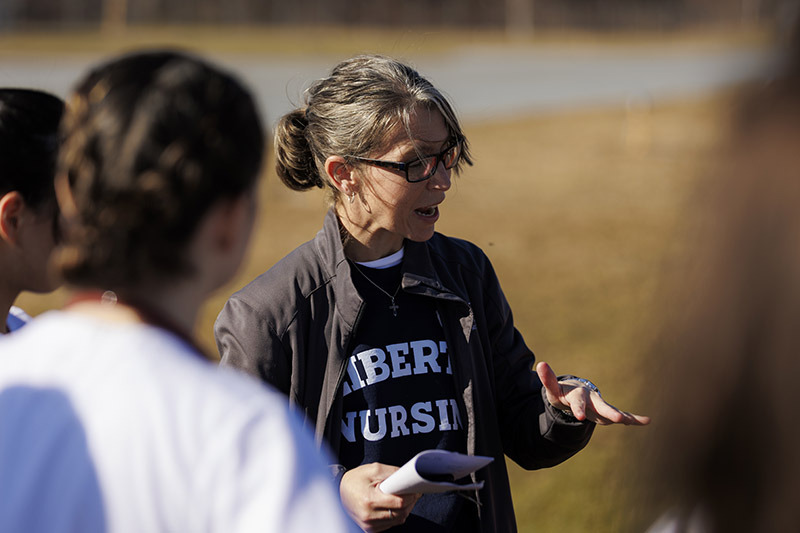
“We want to be very intentional about the opportunities that we afford our students so that they can feel it in real life,” Woody added. “We want them to experience this so when they’re in real life, they’re ready.”
In addition to the two student pilots involved in the staged crash of a Piper PA-44 Seminole, and eight student nurses who treated them and about a dozen other victims on the ground made up with moulage for realistic effect, LUSOA and LUSON students played the roles of airport personnel, state police officers, Red Cross representatives, emergency medical service (EMS) responders, media members, and representatives of the Federal Aviation Administration and the National Transportation Safety Board (NTSB).
School of Nursing Executive Director of Simulation & Standardized Patients Lisa Foote said the exercise was helpful to her students and illustrated the positive effect of partnerships between departments at Liberty.
“To do something interprofessional like this, it’s invaluable not just to the nursing students but to any other students from other departments that are involved,” she said. “They get to learn from each other about their separate experiences and what everybody does. It also teaches them how teamwork is the best.”
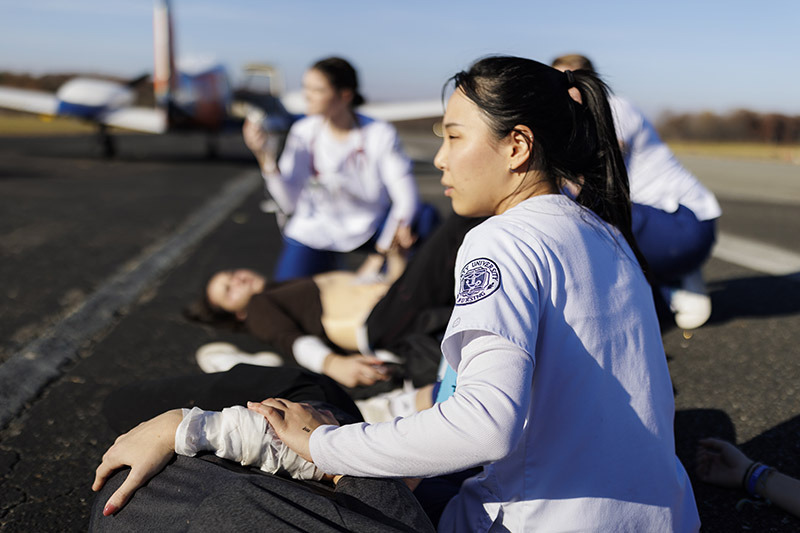
Woody credited her nursing students for their great response and quick thinking as they set up the field hospital after clearing the immediate scene.
“I thought the students were on point today,” Woody said. “They just owned the experience. They came out here and they knew exactly what they needed to do and they got the job done.”
Logan Smith, a senior interdisciplinary major with emphases on Unmanned Aerial Systems (UAS) and government, served in the role of a state police officer conducting the investigation into the crash.
“I have a background in law enforcement being prior military police, so that’s why I played this role,” he said, noting that he plans to incorporate his UAS training into a law enforcement or security career. “This is my first time participating in this. It’s definitely beneficial. It helps eliminate a lot of ‘what-ifs’ if something like this was to happen.”
Smith, who served at Marine Corps Air Station Iwakuni in Japan from 2016-2018 before being based at Camp Lejeune in Jacksonville, N.C., through 2020, has experience responding to an actual air crash as a member of the military police. He said the simulation helped get students in the right mindset for dealing with an emergency situation, though it had its limitations.
”We are in a controlled environment, (so) there’s only so much we can do to paint the picture because once something actually happens, more than likely it’s going to happen outside the airport perimeter,” he said.
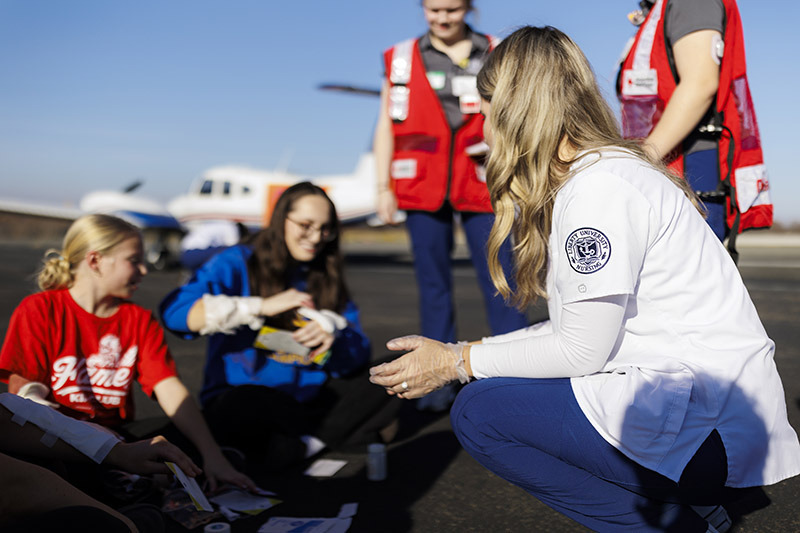
Lynchburg Regional Airport Fire Chief Heather Palm (’00), a certified firefighter and EMT, played the role of incident commander for the emergency operation and enlisted actual members of her rescue team and airport police for the drill. She said the nursing students gained practical experience in triage at the scene of an emergency, while the aeronautics students gleaned a better understanding of their and others’ responsibilities in the aftermath of a plane crash.
“If it ever includes them, then they will understand what is going to happen and what to expect,” said Palm, who challenged the students in a debriefing session to be adaptable under pressure. “This lets them know what to watch for, how to think, and more so to think outside the box, not with blinders on. We get that tunnel vision and we need to think outside of that.”
John Shelor, a senior at LUSOA who played the role of an NTSB investigator, said the practical applications from Thursday’s drill helped bring what the students are learning to life.
“It’s a very welcome break from classroom lecture routine,” he said. “Anytime we get opportunities like this to do some hands-on work, it’s nice because you can see a lot of different things going on at the same time.”
Walton said the illustrations offered on the scene of a simulated emergency served as reminders of best-safety measures for his students.
“We want to have a real strong safety culture here, and the four main components that we talk about are safety policy, risk management, safety assurance, and safety promotion, so we want to push our students to have a solid safety mindset,” he said. “Our goal is to equip, mentor, and send Champions for Christ into the aerospace community. A safe pilot is a good pilot and that’s what we want to send out … to impact the culture within the aviation industry.”
